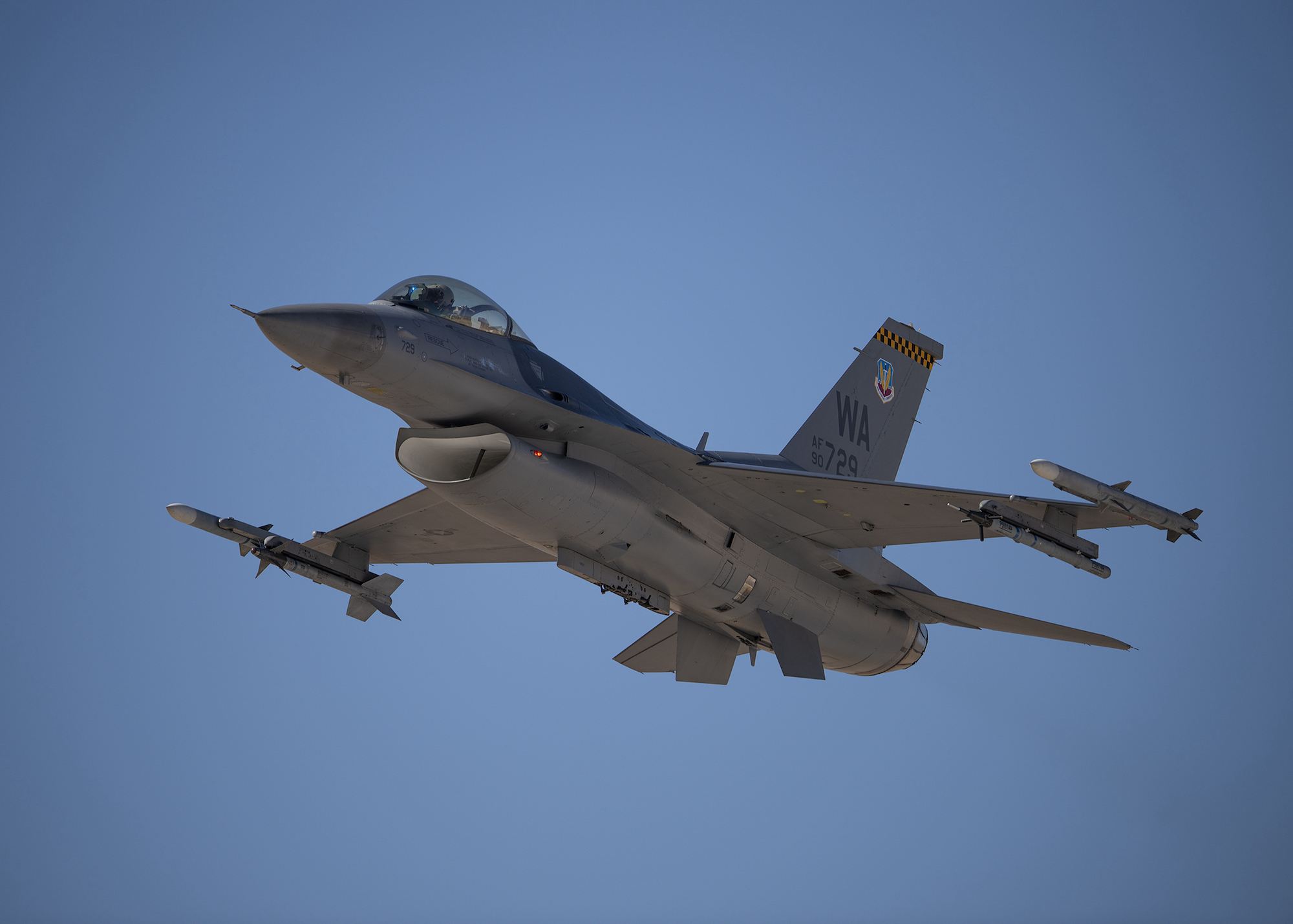

On January 23 of last year, a pilot flying a single-seat F-16 over Nevada lost consciousness. Around 6 months later, on July 16, another pilot operating the same type of fighter jet, also in Nevada, passed out as well. Both of them would have almost certainly been killed were it not for built-in software that took over the controls before they crashed.
Both pilots experienced an aviation phenomenon called G-LOC, which stands for G-induced loss of consciousness, and both were operating in the Nevada Test and Training Range. And in each case, the onboard software system saved the aviators’ lives, according to the Air Force.
The software that saved them is known as Automatic Ground Collision Avoidance System, or AGCAS, and in the January instance, it engaged when the jet was about 2,600 feet above ground level. In the July incident, the software activated at about 4,000 above the deck.
The Air Force Safety Center explained via email to Popular Science that in both cases, “AGCAS is credited with saving the pilots’ lives.”
The Safety Center added: “In both incidents, the pilots were able to regain consciousness during the AGCAS pull-up and they assisted in the recovery of the aircraft; however, their actions alone would not have been in time to prevent collision with the ground.”
Referring to the altitudes above the ground at which the AGCAS engaged, the Safety Center said: “Based on the airspeed and flight paths of the aircraft, these were the altitudes where the system calculated that immediate flight control input was needed to avoid an impending crash.”
Lockheed Martin, which manufactures F-16 and F-35 fighter jets, created the AGCAS software. In simple terms, the code realizes when the jet is going to fly into the ground and attempts to fix the problem. The defense behemoth, which also own Sikorsky helicopters, describes how it works this way on the AGCAS website: “the system consists of a set of complex collision avoidance and autonomous decision making algorithms that utilize precise navigation, aircraft performance and on-board digital terrain data to determine if a ground collision is imminent. If the system predicts an imminent collision, an autonomous avoidance maneuver—a roll to wings-level and +5g pull—is commanded at the last instance to prevent ground impact.”
In the January 2020 event, the pilot was at an altitude of 15,800 feet when they succumbed to G-LOC. In the July event, they were at 17,000 feet.
What is G-LOC?
A fighter pilot experiences G-LOC if they pass out during a maneuver, but safely managing the Gs on a high-performance jet is an everyday task for any pilot at the controls. As a pilot turns the airplane sharply, for example, the G-forces they feel increase rapidly, causing their blood to want to move away from their brain. Two tools exist to help a pilot prevent themselves from passing out: one is a muscle and breathing exercise called the anti-G straining maneuver, and the other is a G-suit the aviator wears. That suit dynamically responds to what the jet is doing, and squeezes the pilot’s lower body, like a high-tech blood-pressure cuff. The two tools together should keep the blood from pooling in the lower portion of the pilot’s body. If a pilot does not cope with the Gs appropriately, they could pass out.
[Related: I flew in an F-16 with the Air Force and oh boy did it go poorly]
To be sure, not all G-LOCs result in an imminent crash and the activation of the emergency software. The Air Force Safety Center reported to Popular Science that in the fiscal year 2020, there were eight G-LOC events, including the two in which the emergency software activated. The eight occurred in Texas, Nevada, Oklahoma, Oregon, or Florida, and involved F-16Cs, T-6A trainers, a T-38C trainer, an F-15C, and an F-22A. In all eight instances, no pilot was hurt and no aircraft was damaged. That number of incidents is a decrease from fiscal year 2019, in which there were 12 G-LOC events that the Safety Center reported to Popular Science.
In March of 2019, an aviator over Oregon experienced a G-LOC event that was serious enough to result in major damage to the aircraft, even if it didn’t crash. That pilot was not hurt.
And in 2018, tragically, a member of the Thunderbirds demonstration team died during training as a result of G-LOC.
So far, in this fiscal year, there have been two G-LOC events that the Safety Center reported to Popular Science.
[Related: A pilot passed out while flying an F-15 over Oregon. Here’s what happened next.]
All told, the AGCAS software is now credited with saving 11 pilots and 10 F-16 aircraft, according to a Lockheed Martin spokesperson.
The software is on F-35s and F-16s, but not all of them. Of the F-35s that the Air Force and Air National Guard have, the Safety Center said that 98 percent have the software installed. As for the F-16s, the AGCAS is on those jets from “Block 40” and newer—the “block” is like its lot number. A Safety Center spokesperson said via email that the software “is projected to begin fielding on over 300 F-16 Pre-Block 40 (Block 30s) aircraft with analog flight controls in early 2022.”
The events in January and July of 2020 in which the AGCAS system activated were previously reported by Military.com, although at the time it wasn’t yet clear if the software could be credited with saving the life of the pilot in the July incident.
